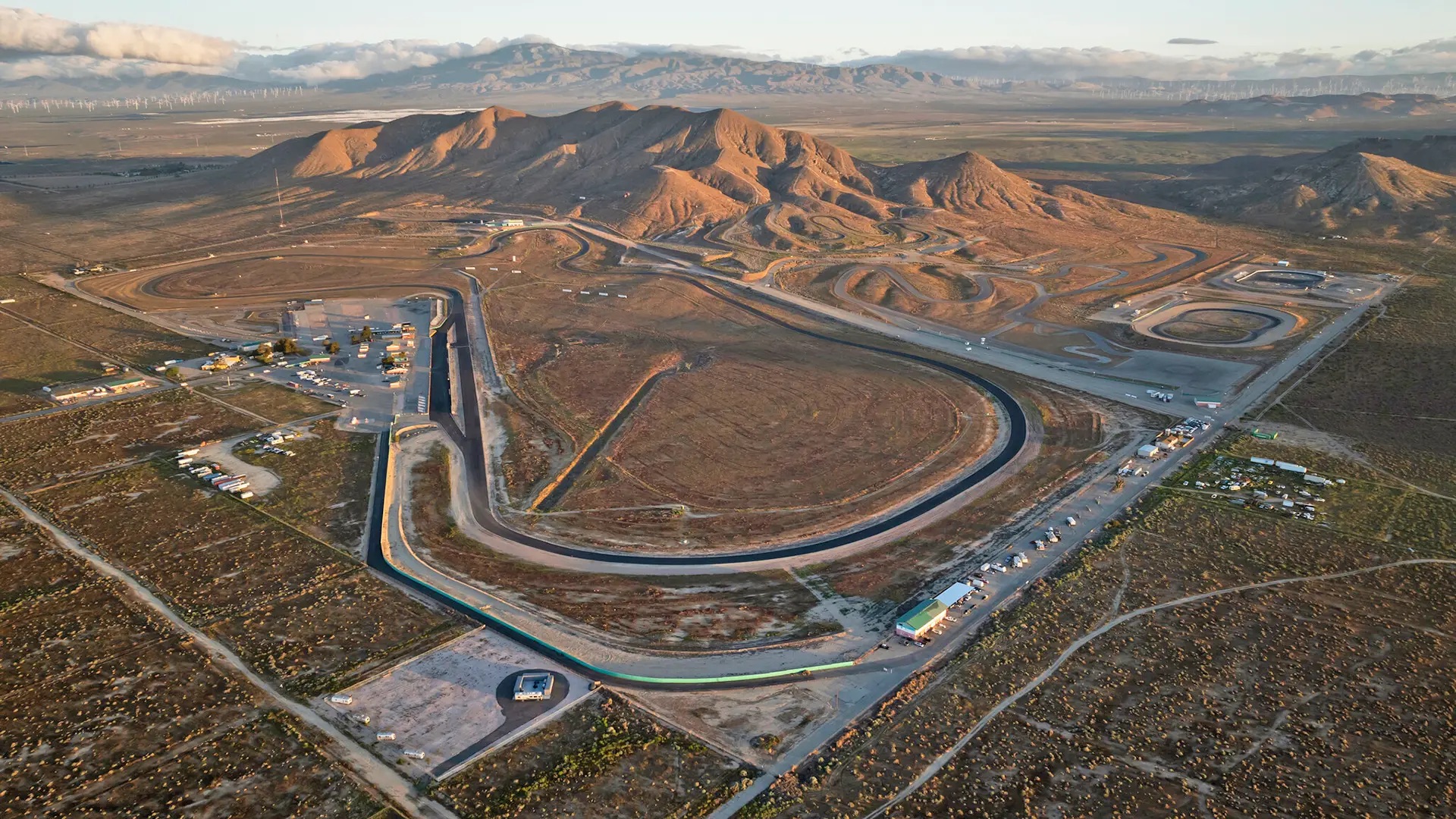This is a big one: the historic Willow Springs Raceway in California, one of the best-preserved race tracks hailing from the golden age of midcentury American motorsport, is now for sale. After 62 years under the care of Bill Huth and his family, whose careful ownership is the reason the track has survived this long in its low-key, accessible state, Willow Springs is heading into an uncertain future.
The listing appeared on Loopnet, and it’s accompanied by a dedicated website explaining everything the track has to offer—both current assets and development potential—to the next owner. The price is undisclosed, though we’ve called to ask and will update if the broker gets back to us. Now before we start really panicking, I think it’s highly unlikely that someone’s going to buy Willow Springs to raze it and build tract housing. It’s way out in the high desert north of Los Angeles, for one, and the way it’s being marketed makes it clear the family wants a buyer who will continue to operate the track.




e country being transformed into a high-end playground with private garages and trackside condos for rich enthusiasts, based on the “investment opportunities” described in the listing:
- On average, Willow Springs track rental rates are 55% below comparable raceways.
- New ownership should consider capital expenditures to improve facility functionality.
- Further investments can generate demand for high-end clientele, membership-based revenue stream, increased gate fees and concession sales, additional lodging options and long-term garage rentals
Yikes. Today, Willow Springs Raceway is a complex of seven race tracks, including iconic 2.5-mile Big Willow (which you’ve probably run in Gran Turismo if you’ve never been out in person), Streets of Willow, and Horse Thief Mile. There’s a skid pad, autocross setup, even a dirt oval. It plays regular host to assorted open track days, club races, automaker events, film shoots, drifting classes, stunt driving classes, and more. Between the all-inclusive vibe and the completely unpretentious facilities, the whole place feels like it’s out of another era in the best way possible. It is a little ragged and beat up around the edges, with a lot of sun-baked outbuildings and cracked pavement both off and on the tracks. But that’s more than ok with its usual patrons. And with movie productions like Ford vs Ferrari, who barely needed to spend anything on set design or CGI to make Willow look like it did in the 1960s when Carroll Shelby and Ken Miles were hanging around.




Opened in 1953 with design help from Miles, Willow Springs met the need for a fast racecourse as the southern California automotive scene exploded in the postwar era. After experiments with a few NASCAR races failed to turn it into a pro track, it was purchased by Bill Huth in 1962, whose son told MotorTrend in 2015 that he only bought it because he wanted to turn Big Willow’s front straight into a drag strip.
It turned out to be too short, thankfully, so the road course survived. Over the decades, Huth added the other tracks and expanded Willow Springs into its present form, always careful to keep its original character. Huth was still calling the shots when he passed away in 2015 at the age of 91, but since then his family continued to operate the track as he did until apparently deciding to sell this year.
I think one of the reasons Willow Springs has endured as an icon is its accessibility. It’s cheap, it’s used by track rats and $100M movie productions alike, and it’s close to an epicenter of car culture. Whatever happens with this sale, it’s not going to be the same anymore.
Got a tip? Send us a note: tips@thedrive.com

